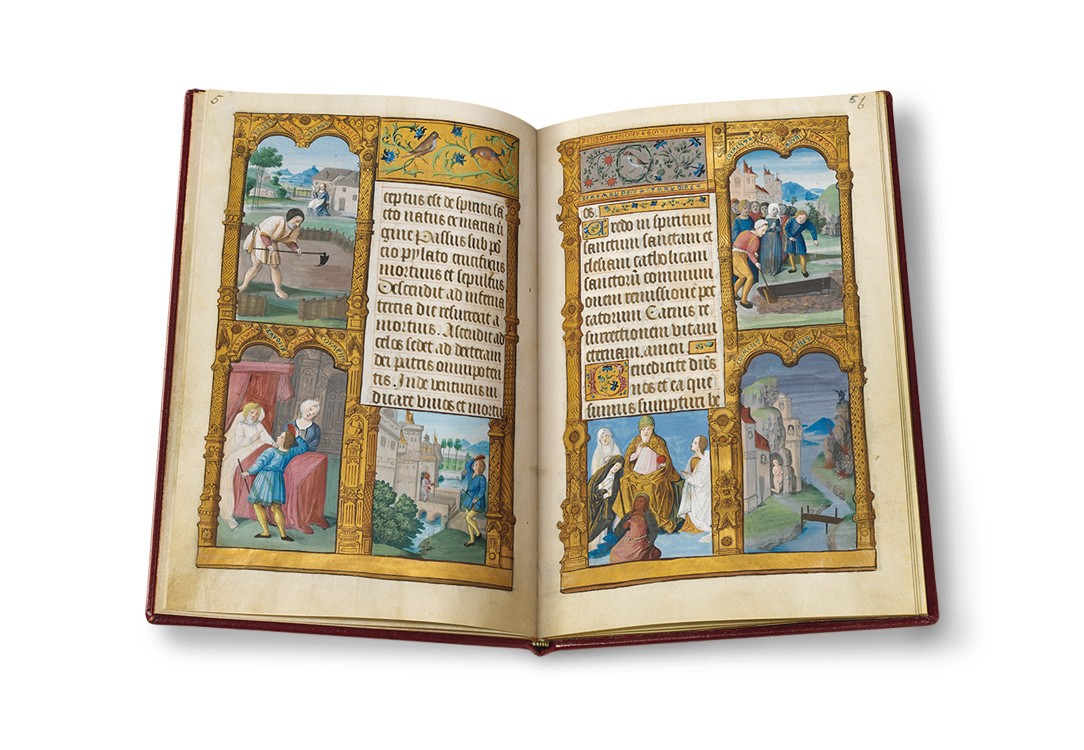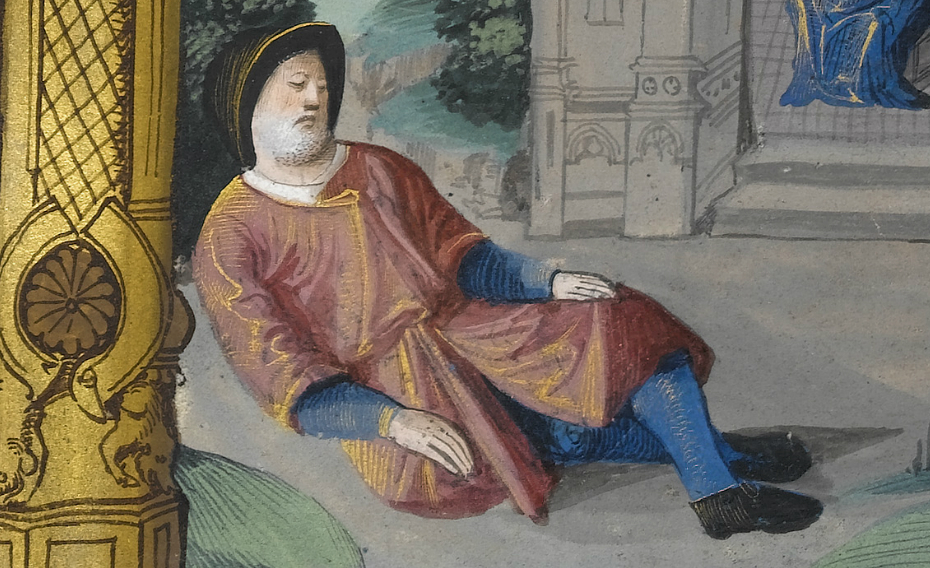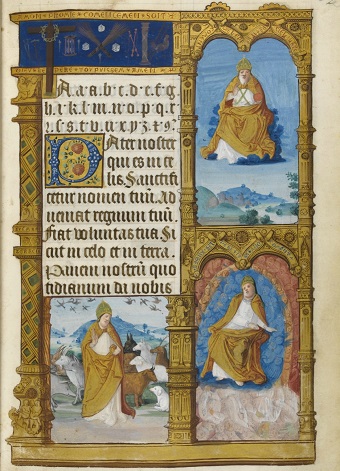The Primer of Claude de France
A Royal Reader with Golden Images
The Primer of Claude de France is a golden picture book intended as a first reader for a young princess at the beginning of the 16th century.
Join the six-year-old daughter of the French Queen in her efforts to learn the ABC and to read the universal stories of the Bible. Follow the brilliantly composed pictorial narrative created by the Italian-born artist of this magnificent manuscript! Indulge in the shimmering strokes of brushed shell gold and the soft coloration with thin washes of paint! More than 500 years ago, the artist’s lively brushwork created a world of images which continue to fascinate the viewer until this very day.
Fibel der Claude de France
The Primer of Claude de France: The Manuscript
A Princess Learns to Read
Dating from about 1505, the Primer of Claude de France was commissioned by Anne of Brittany, Queen of France. Her six-year-old daughter was to use this richly illuminated book in order to learn how to read and pray. Very likely Queen Anne herself decided on the texts and the pictorial program, and entrusted the court painter Guido Mazzoni of Modena with the illustration of the Primer. The size of the manuscript and the large script suggest that the Primer was made for young Claude’s own use. The text opens with the alphabet, including variant shapes of letters, followed by the five universal prayers and the three prayers for Mass, which every child was expected to learn.
Children’s Books as a Rarity
Hardly any type of manuscript has survived as seldom as the medieval readers designed for children. The Primer of Claude France is a great rarity. It was rather uncommon to commission manuscripts especially for children. The sons and daughters of royal and princely families, and of noblemen and wealthy citizens, learned to read from Psalters and Books of Hours. Looking at the pictorial cycles contained therein, they became familiar with the Bible stories. In Psalms and prayers they read the texts needed for their daily devotions. And so primers, which were books specifically designed to teach a child the alphabet, were a rare exception.
From France to England
Anne of Brittany commissioned primers for three of her children. We may well assume that Claude cherished her first book. Later, one of her children probably also used this charming manuscript to learn how to read and pray. Soon after, any evidence of The Primer of Claude de France is lost for centuries. Only in the 18th century does it reemerge in an English private collection. At that time, the manuscript obtained its current binding of red brown leather with the title on a pasted label. Richard Fitzwilliam, seventh Viscount Fitzwilliam, acquired the primer in 1808 and bequeathed it, together with his art collection and library, to the University of Cambridge in 1816.
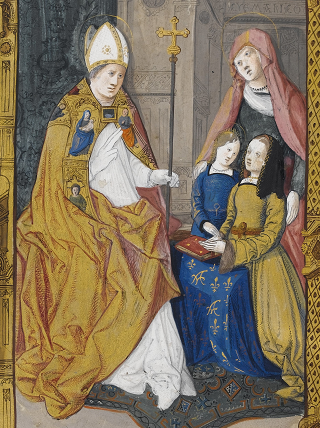
Fibel der Claude de France
Under the Magnifying Glass: The Creation, Fall and Redemption in Miniatures
The Primer of Claude de France comprises a total of 36 miniatures. They are placed within gold architectural frames featuring richly decorated columns, bases and capitals. The miniatures are arranged to create a consistent pictorial narrative ranging from the Creation, the Fall of Man, and so on until Adam’s death, referring each of them to events from the history of salvation until Christ’s birth. The scenes are set within splendid palaces, on avenues or cityscapes, or on landscapes with bluish-green hills suffused with light. The pale colours used for the backgrounds are semi-transparent, thereby causing the figures in the foreground to stand out.
While the text on the first page of the Primer (p. 2) contains the alphabet and the opening words of the Lord’s Prayer, the pictorial narrative starts on the upper right. Wearing a golden chasuble and a tiara, God the Father creates the heavens and the earth. Seated on a throne shaped by dark blue clouds, he floats in a clear sky above a peaceful landscape. The scene at the lower right shows the creation of the angels. In a gesture of command, God banishes from heaven the rebel angels, who tumble down below his feet. On the left below, the story of the Creation is continued. God the Father blesses the beasts of the earth he has just created, while birds circle above.
Fibel der Claude de France
The Primer of Claude de France: The Edition
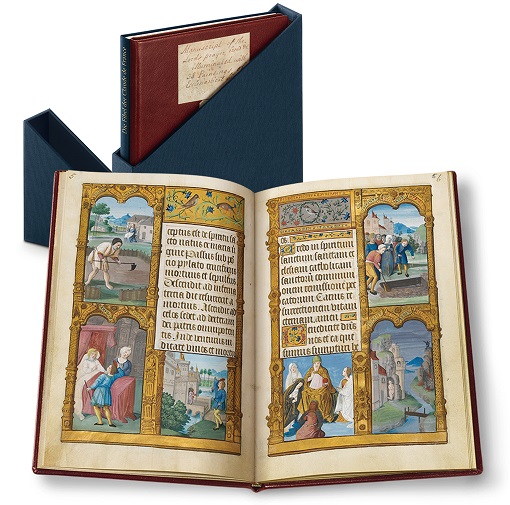
The Manuscript and the Facsimile at a Glance
Even after half a millennium, the Primer of Claude de France, adorned with gold architectural frames which surround the delicate pictures, appears as fresh as it was at the time it was created. True to the original, the facsimile edition has faithfully retained this charming quality.
Manuscript: Cambridge, Fitzwilliam Museum, MS 159
Date of Origin: about 1505
Place of Origin: Romorantin (Loire Valley)
Dimensions: c. 26.0 x 17.5 cm
Extent: 20 pages (10 leaves)
Artist: Guido Mazzoni of Modena
Patroness: Anne of Brittany, Queen of France and mother of Claude de France
Illumination: 36 miniatures framing the texts, golden architectural frames, 12 decorated panels with flower sprays, birds and putti; 22 initials on a gold ground, line fillers, softly shimmering powdered gold
Binding: red-brown leather binding
Commentary Volume for the Facsimile Edition by Roger S. Wieck / Eberhard König / Cynthia J. Brown
Print run: 980 copies
Fibel der Claude de France
A Challenging Production: fac simile
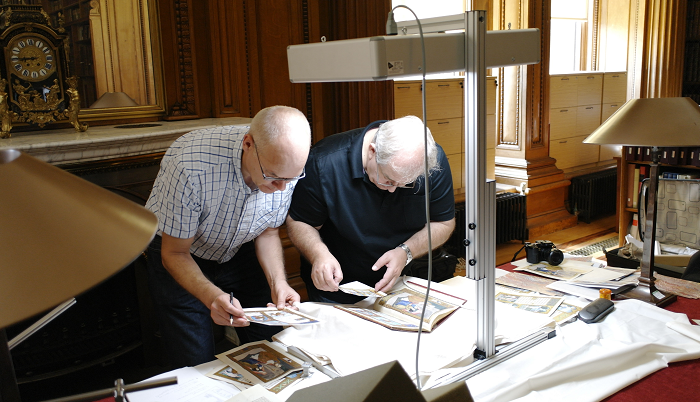
Prints Matched with the Original
With a special camera designed to capture the smallest colour nuances, digital photographs are taken of every page of the Primer of Claude de France on the premises of the Fitzwilliam Museum in Cambridge. The lithographer processes the pictorial data at the computer. To reproduce the generously applied powdered gold, separate gold prints have to be made, in order to render faithfully the delicate shimmer of these areas. Only then can the printing be started. The print runs are compared with the manuscript at the museum, in order to be able to detect and to correct the smallest deviations. This process has to be repeated until there is no visible difference between the facsimile and the original.
The Traditional Craft of Bookbinding
The bookbinder folds the printed sheets into sections for sewing and forming the book-block. He embroiders the headband and applies the edge gilding. The leather used for the facsimile binding has especially been tanned for this edition. True to the original, it is dyed a warm red-brown hue. The insides of the two boards, the pastedowns, are also covered with leather. The printed flyleaves are reproduced to match the 18th-century marbled paper of the original. Once the book is bound, the title label is pasted on the front cover, while the book-plate of the seventh Viscount Fitzwilliam is attached in the book.

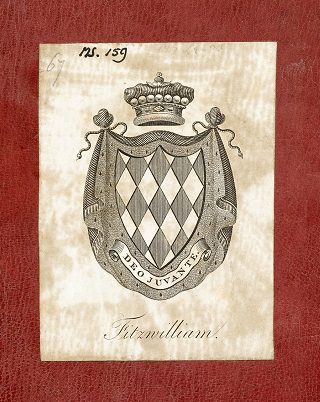
Fibel der Claude de France
Request brochure
We would be glad to provide you with additional information regarding the fine art facsimile edition of the Primer of Claude de France. Click here to order the brochure.
Contact us
Do you have any questions about the Primer of Claude de France edition? Please do not hesitate to contact us. We are looking forward to your message.




